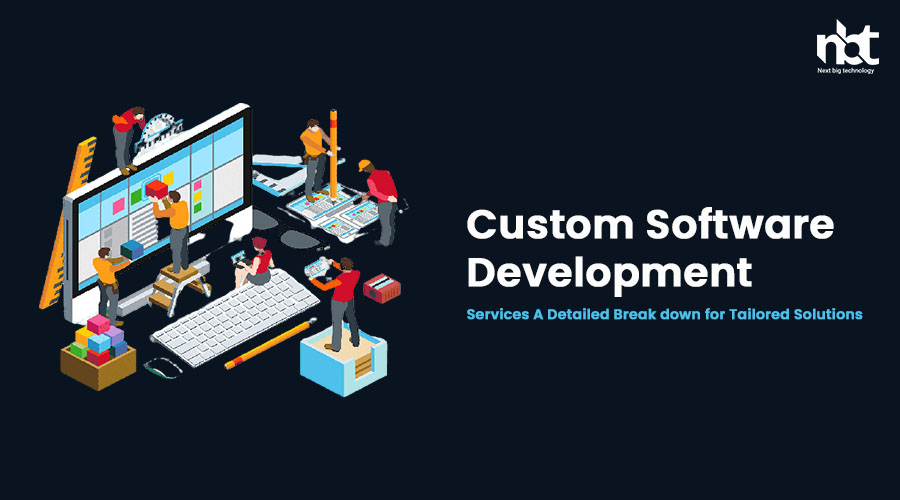Introduction: In today’s competitive business landscape, off-the-shelf software may not always meet the unique requirements of your organization. Custom software development provides a tailored solution designed specifically to address your business needs. In this blog, we will provide a detailed breakdown of the key components and benefits of custom software development services. Understanding these components will help you make informed decisions and harness the power of custom software to drive efficiency and growth.
- Requirements Gathering: Requirements gathering is the initial phase of custom software development and involves understanding your specific business needs and goals. Key aspects of requirements gathering include:
a) Business Analysis: Working closely with stakeholders to identify pain points, business processes, and desired outcomes to ensure the software solution aligns with your organization’s objectives.
b) Functional Specifications: Documenting detailed functional specifications that outline the features, workflows, and user interactions required in the software.
c) Scope Definition: Defining the scope of the software project to establish clear boundaries and manage expectations regarding project deliverables and timelines.
- Solution Design: Solution design focuses on translating the gathered requirements into a comprehensive software design. Key aspects of solution design include:
a) Architecture Planning: Designing the software architecture, including the database structure, application layers, and integration points, to ensure scalability and performance.
b) User Interface (UI) Design: Creating an intuitive and user-friendly interface that aligns with your brand identity and provides a seamless user experience.
c) Technical Design: Selecting the appropriate technologies, frameworks, and tools to implement the software solution effectively.
- Development and Testing: The development and testing phase involves coding the software solution and rigorously testing it for quality assurance. Key aspects of development and testing include:
a) Agile Development: Following an iterative and collaborative development approach, such as Agile or Scrum, to ensure flexibility and adaptability to changing requirements.
b) Coding and Unit Testing: Writing clean and maintainable code, conducting unit tests to validate individual components, and ensuring code quality through code reviews.
c) System and Integration Testing: Performing comprehensive testing to validate the entire system’s functionality, integration with external systems, and user acceptance.
- Deployment and Maintenance: The deployment and maintenance phase involves releasing the software solution and providing ongoing support and maintenance. Key aspects of deployment and maintenance include:
a) Deployment Planning: Creating a deployment plan to ensure a smooth transition from development to production environments.
b) User Training and Support: Providing training and documentation to users to facilitate adoption and offering continuous technical support to address any issues or enhancements.
c) Maintenance and Upgrades: Regularly maintaining and updating the software to address security vulnerabilities, bug fixes, and performance improvements.
- Scalability and Future Growth: Custom software development allows for scalability and future growth. Key aspects of scalability and future growth include:
a) Scalable Architecture: Designing the software with scalability in mind, ensuring it can handle increased data volume, user load, and feature expansion.
b) Modular Approach: Building the software in a modular manner, allowing for easy integration of new functionalities and seamless upgrades.
c) Continuous Improvement: Continuously monitoring and gathering user feedback to identify areas for improvement and leveraging advancements in technology to enhance the software solution over time.
Conclusion: Custom software development services offer the opportunity to create tailor-made solutions that precisely meet your business requirements. By understanding the key components discussed in this blog, including requirements gathering, solution design, development and testing, deployment and maintenance, and scalability and future growth, you can leverage custom software to drive efficiency, innovation, and competitive advantage for your organization. Collaborating with experienced software development professionals will further ensure the successful implementation and long-term success of your custom software project.

















